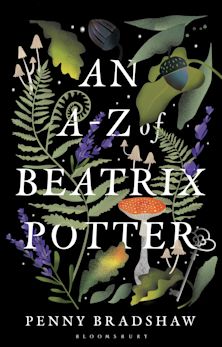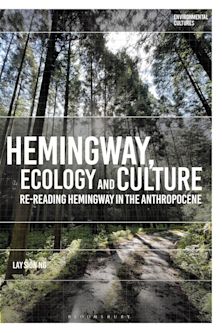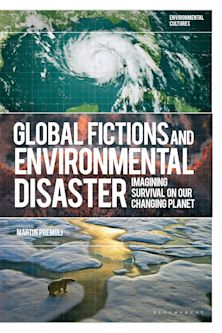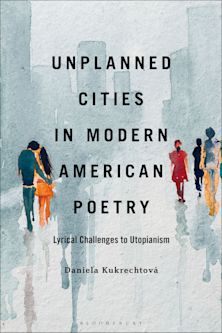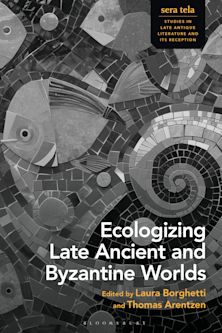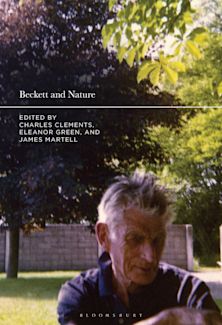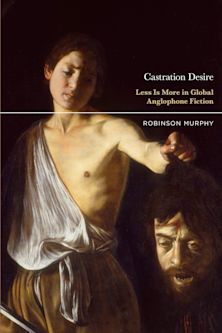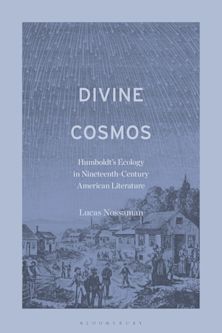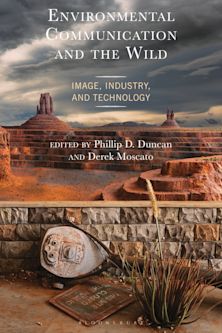- Home
- ACADEMIC
- Literary Studies
- Environmental Humanities/Literature and the Environment
- Thinking about Animals in the Age of the Anthropocene
Thinking about Animals in the Age of the Anthropocene
Morten Tønnessen (Anthology Editor) , Kristin Armstrong Oma (Anthology Editor) , Silver Rattasepp (Anthology Editor) , Almo Farina (Contributor) , Carlo Brentari (Contributor) , Katharine Dow (Contributor) , Martin Drenthen (Contributor) , Annabelle Dufourcq (Contributor) , Peter Gaitsch (Contributor) , Gisela Kaplan (Contributor) , Eva Meijer (Contributor) , Susan M. Rustick (Contributor) , Bronislaw Szerszynski (Contributor) , Mateusz Tokarski (Contributor) , Sebastjan Vörös (Contributor) , Louise Westling (Contributor)
Thinking about Animals in the Age of the Anthropocene
Morten Tønnessen (Anthology Editor) , Kristin Armstrong Oma (Anthology Editor) , Silver Rattasepp (Anthology Editor) , Almo Farina (Contributor) , Carlo Brentari (Contributor) , Katharine Dow (Contributor) , Martin Drenthen (Contributor) , Annabelle Dufourcq (Contributor) , Peter Gaitsch (Contributor) , Gisela Kaplan (Contributor) , Eva Meijer (Contributor) , Susan M. Rustick (Contributor) , Bronislaw Szerszynski (Contributor) , Mateusz Tokarski (Contributor) , Sebastjan Vörös (Contributor) , Louise Westling (Contributor)
You must sign in to add this item to your wishlist. Please sign in or create an account
Description
The term “Anthropocene”, the era of mankind, is increasingly being used as a scientific designation for the current geological epoch. This is because the human species now dominates ecosystems worldwide, and affects nature in a way that rivals natural forces in magnitude and scale. Thinking about Animals in the Age of the Anthropocene presents a dozen chapters that address the role and place of animals in this epoch characterized by anthropogenic (human-made) environmental change. While some chapters describe our impact on the living conditions of animals, others question conventional ideas about human exceptionalism, and stress the complex cognitive and other abilities of animals. The Anthropocene idea forces us to rethink our relation to nature and to animals, and to critically reflect on our own role and place in the world, as a species. Nature is not what it was. Nor are the lives of animals as they used to be before mankind´s rise to global ecological prominence. Can we eventually learn to live with animals, rather than causing extinction and ecological mayhem?
Table of Contents
Introduction: Once upon a Time in the Anthropocene
Morten Tønnessen & Kristin Armstrong Oma
Part I: Beyond Human Eyes
Chapter 1: Held Hostage by the Anthropocene
Susan M. Rustick
Chapter 2: Dangerous Intersubjectivities from Dionysos to Kanzi
Louise Westling
Chapter 3: Animals in a Noisy World
Almo Farina
Part II: Phenomenology in the Anthropocene
Chapter 4: A Phenomenological Approach to the Imaginary of Animals
Annabelle Dufourcq
Chapter 5: Speaking with Animals: Philosophical Interspecies Investigations
Eva Meijer
Chapter 6: Desire and/or Need for Life? Towards a Phenomenological Dialectic of the Organism
Sebastjan Vörös & Peter Gaitsch
Part III: Beast No More
Chapter 7: Understanding the Meaning of Wolf Resurgence, Ecosemiotics, and Landscape Hermeneutics
Martin Drenthen
Chapter 8: Behaving like an Animal? Some Implications of the Philosophical Debate on the Animality in Man
Carlo Brentari
Chapter 9: Seeing with Dolphins: Reflections on the Salience of Cetaceans
Katharine Dow
Part IV: New Beginnings
Chapter 10: Out of the Metazoic? Animals as a Transitional Form in Planetary Evolution
Bronislaw Szerszynski
Chapter 11: Dangerous Animals and Our Search for Meaningful Relationships with Nature in the Anthropocene
Mateusz Tokarski
Chapter 12: Don Quixote’s Windmills
Gisela Kaplan
About the Contributors
Index
Product details
| Published | 13 Apr 2016 |
|---|---|
| Format | Ebook (Epub & Mobi) |
| Edition | 1st |
| Extent | 280 |
| ISBN | 9781498527972 |
| Imprint | Lexington Books |
| Illustrations | 3 b/w photos; 3 tables |
| Series | Ecocritical Theory and Practice |
| Publisher | Bloomsbury Publishing |
About the contributors
Reviews
-
This book, a collection of a dozen scholarly chapters that address various aspects of the anthropocene and human/animal relationships, is fascinating…. I think anyone in an animal studies programs will see this book as a ‘must read,’ because it speaks to the challenges animal rights activists face in raising awareness of animal issues.
EcoLit Books
-
In the throes of ecological crisis, it is heartening to encounter an ensemble of essayists determined to critique and remediate human violence (both literal and semiotic) against other animals. Thinking about Animals in the Age of the Anthropocene offers intricately detailed pathways toward empathetic interspecies connections that resist the isolated, narcissistic arrogance of anthropocentrism.
Randy Malamud, Regents' Professor of English, Georgia State University and author of "Reading Zoos", "The Importance of Elsewhere", and "Strange Bright Blooms"
-
This important collection probes the dangers of the Anthropocene beyond the human perspective. If other animal species are not our slaves but co-authors of our planetary lives, what becomes of nature and of that species once upon a time known as man? These provocative essays draw on a rich diversity of disciplines to address the looming crisis.
Cynthia Willett, Samuel Candler Dobbs professor of philosophy, Emory University; coauthor, "Uproarious: How Feminists and Other Comic Subversives Speak Truth"
-
The ramifications of climate change are already creating a strange, precarious world for all life on Earth, where the challenges of the Anthropocene extend far beyond the controversies of its labeling by the human animals that have so influenced this moment in geologic time. Examining the roles humans have played in evolving global ecosystems and toward specific animals, this ambitious and provocative collection explores some of the overlapping and interwoven issues of species to argue for human humility and modesty as we all face an uncertain future. This evocative collection comes just at the right time.
Sarah McFarland, Northwestern State University












